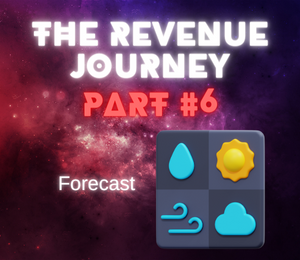Revenue Management – Forecast
A good forecast is the most important part of any revenue management decision making process. Without an accurate forecast it is not possible to make accurate revenue driving decisions and may even result in damage to the business rather than driving it. The objective needs to be clear to everyone and objectives of the different types of forecast should not be mixed up.
Types of Forecast
The first type of forecast is made for financial or business planning purposes. The budget is the main planning forecast, this is the financial promise that the operator makes to the owner.
To ensure business is on track, the operator prepares monthly forecasts to anticipate any deviations from the originally set budget. This includes a forecast for the remainder of the budget year. Financial forecasts are monthly forecasts by market segment which include occupancy, average daily rate, revenue projections, as well as forecasts to assist the other departments in the property.
Financial forecasts have little value as a revenue management forecast as they lack detail needed for pricing, rates and inventory decisions. However, they are still important to make sure the property is on track to achieve the promise to the owner. Typically these types of forecast consist of monthly numbers.
The second type of forecast is a revenue management forecast. The purpose of this forecast is to make pricing and inventory management decisions. Pricing and inventory management decisions are typically not the same for every day of the month and a revenue management forecast therefor needs to be a forecast by day, by segment.
A revenue management forecast should follow these standards:
– It should be prepared at least once a week for the next 90 days and monthly for the next 365 days.
– The revenue management forecast should be made by day, by segment and should include occupancy, average daily rate and revenue numbers.
– Regrets and denials should not be used during a forecast. Regrets and denials are inherently inaccurate data and impact forecast accuracy negatively. The forecast should be prepared by segment and then combined into the total forecast for the day. This is the unconstrained forecast. ‘Unconstraining’ is a mathematical exercise.
– The revenue management forecast should not be made to ‘fit’ the financial forecast. An incorrect or inaccurate revenue management forecast will lead to suboptimal pricing and inventory management decisions and will lead to a loss in revenue.
The amount of data used for an accurate revenue management forecast is large and with a good revenue management system with a sophisticated forecasting and optimization engine is definitely required for any hotel of reasonable size and complexity however this will be discussed a little later in the Revenue Journey.
Forecasting Process
There are several data sources necessary to prepare a good forecast.
– Initially, when there is no data on the books yet, historical data will need to be used to prepare an initial forecast. General day of week patterns and seasonal patterns in the historical data will be projected forward to come up with the initial forecast. Any special events that will take place should be incorporated, as well as any events in the past year that will not reoccur should be removed.
– Latest trend data should be incorporated. For example, how have the last 6-8 Mondays developed, and the Tuesdays, Wednesdays and so on. So if the last 8 Mondays show that the hotel has achieved an average of 50 rooms at BAR rate from OTAs, with a deviation of maximum 5 rooms, then it is quite likely the next few Mondays will be similar, unless of course there is impact from past or future special events.
– Once the hotel gets ‘into the booking cycle’ the on the books data is taken into account. Based on history and latest trends an ‘expected pace’ is developed. Comparing this pace to the on the books data will show if it is above or below the expected booking pace and the forecast should be adjusted accordingly.
– Competitor rate data should also be taken into account. If the competitors are increasing rates, this may indicate compression in the market and bookings may come in stronger than initially expected. The forecast should be increased in this case. If the competitors are lowering rate, this may indicate a soft market and the forecast should be lowered.
The most Important aspect of a forecast is that it should be as realistic as possible and not lowered or increased because of ‘political’ reasons. Pricing and inventory management decisions, as well as business planning decisions are made based upon the forecast and not having a realistic or accurate forecast may result in suboptimal revenue management decisions which will lead to lower results. This should be avoided as at all costs.

